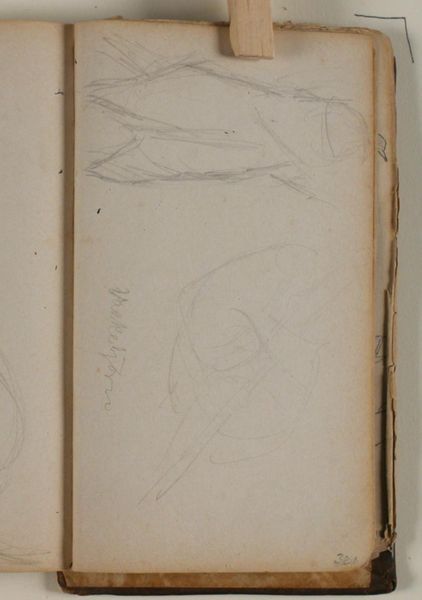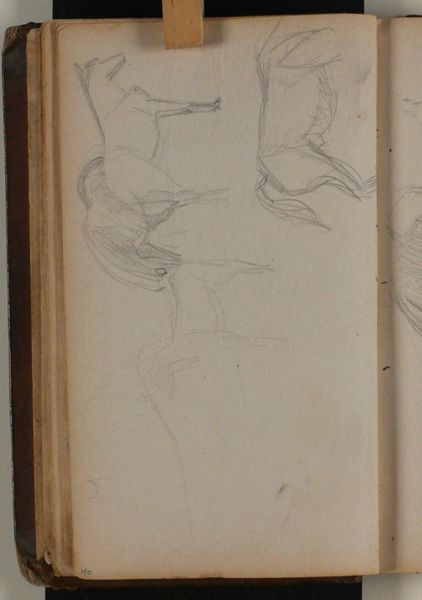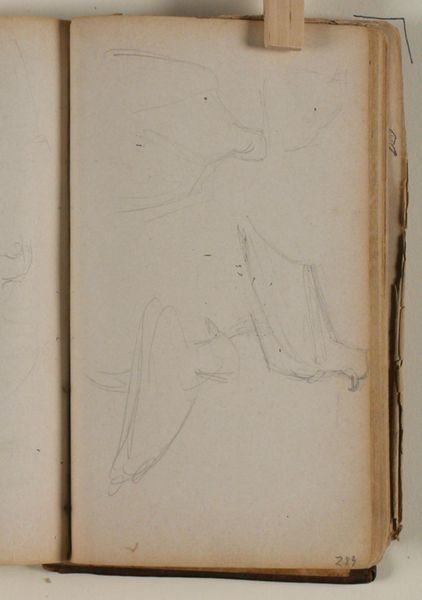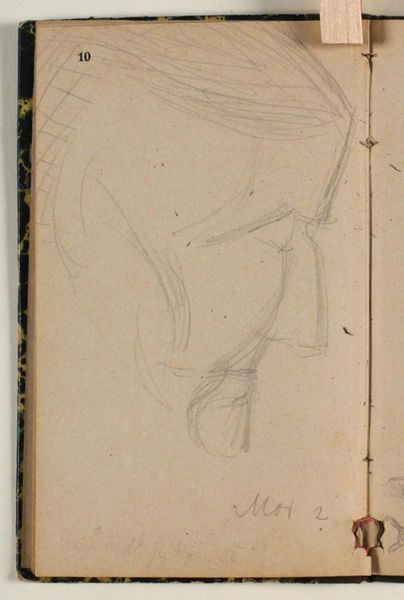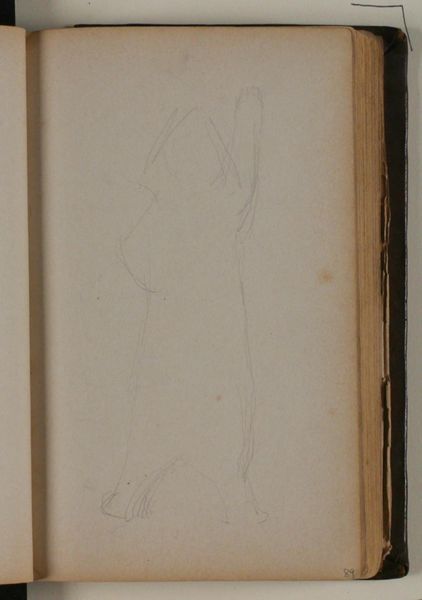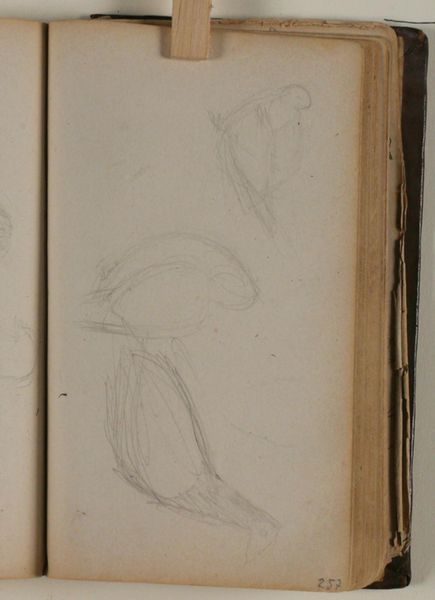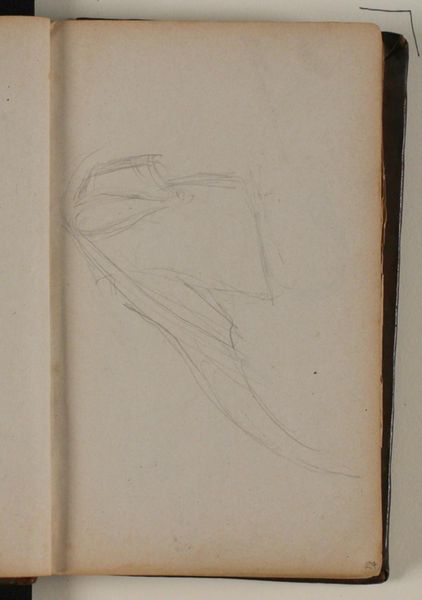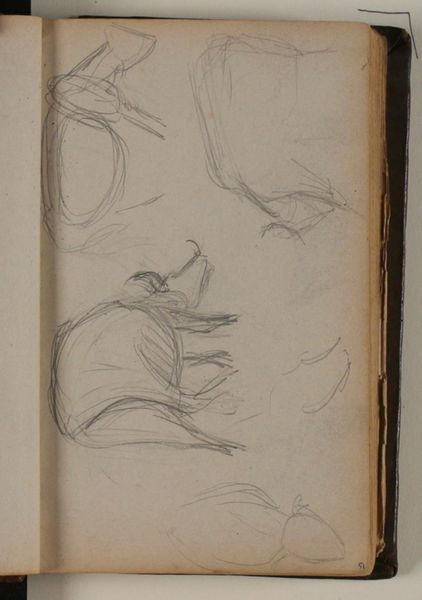
drawing, paper, pencil
#
drawing
#
landscape
#
paper
#
form
#
sketch
#
pencil
Curator: Here we have Niels Larsen Stevns’ "Studies of Eagle", dating from around 1864 to 1941. It’s a pencil drawing on paper, currently held at the SMK, the National Gallery of Denmark. What are your initial thoughts? Editor: My first impression is one of fragility and tentative movement. The spareness of the lines gives it an ephemeral quality, as if the eagles might take flight off the page at any moment. Curator: Yes, and the way he’s handled the pencil, particularly in the underdrawing of the forms, reveals a dedication to understanding pure structure. The subtle variations in line weight—thin, almost invisible at times—articulate mass and volume without relying on traditional shading techniques. Notice also the limited use of contour. Editor: That spare contour allows us to interpret so much, doesn’t it? The eagle is, of course, a potent symbol. Across cultures, it signifies power, vision, even divine connection. I’m struck by how these quickly rendered studies still manage to capture that sense of soaring dominance. Curator: It is captivating how, with so few strokes, Stevns indicates the potential energy contained within this form. Look at the beak; so minimal, yet completely expressive of raptorial force. It really comes down to compositional economy and understanding of avian anatomy, right? Editor: Absolutely. And it raises the question, was Stevns intending to create an evocative portrait of an individual bird, or to use the eagle form to access deeper archetypes of freedom and authority? Or both, perhaps inextricably linked? Curator: Perhaps we, the viewers, are simply asked to consider the semiotic weight the eagle holds within the symbolic order. Through this study, Stevns invites us to contemplate the nature of artistic observation itself – reducing form to pure, essential elements. Editor: I'm inclined to see this sketch as reaching towards those bigger ideas, using the form as a conduit for cultural and even psychological associations. It really allows us to imagine Stevns pondering the broader implications of this majestic bird. Curator: Indeed. The inherent duality of analysis: reduction to constituent form, and expansion into the realm of resonant metaphor. An engaging juxtaposition of structure and symbol! Editor: Precisely! It has been insightful to think about how that tension exists, even in these early, delicate sketches.
Comments
No comments
Be the first to comment and join the conversation on the ultimate creative platform.
